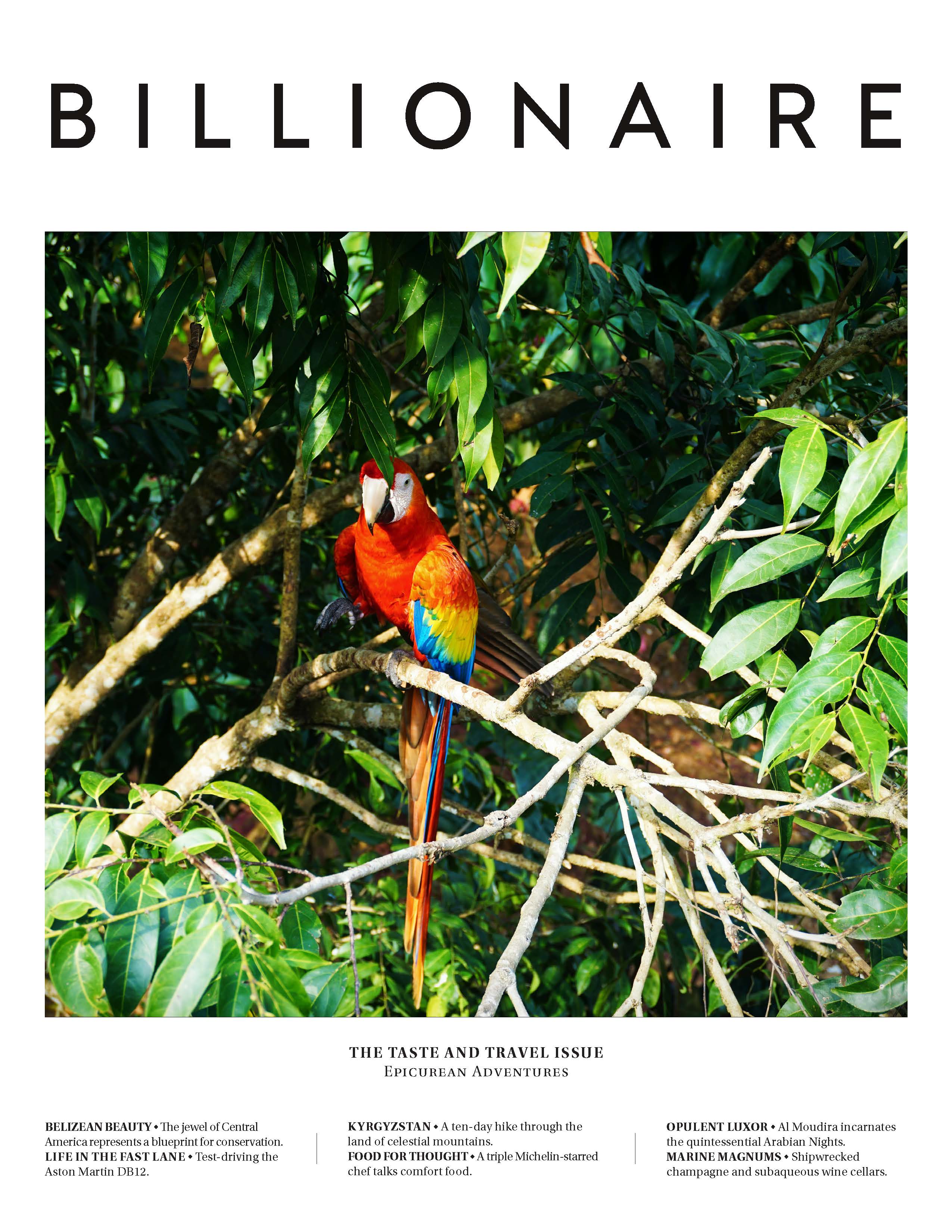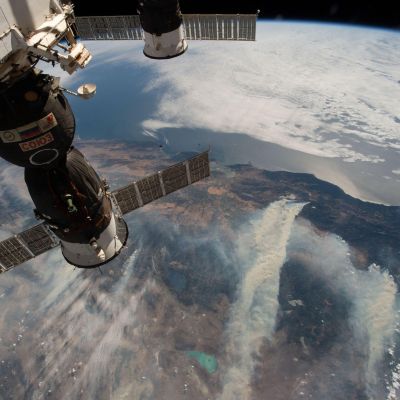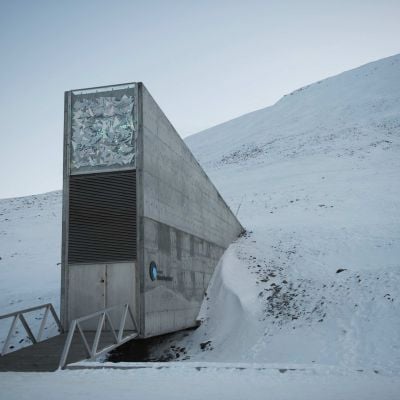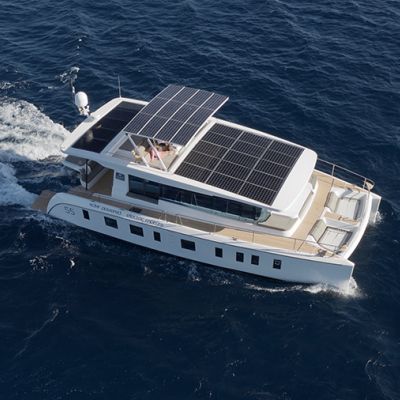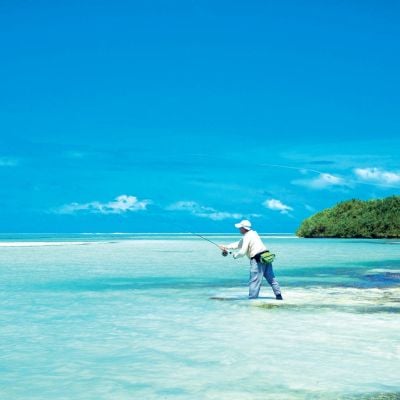Kyrgyzstan: Land of the Celestial Mountains
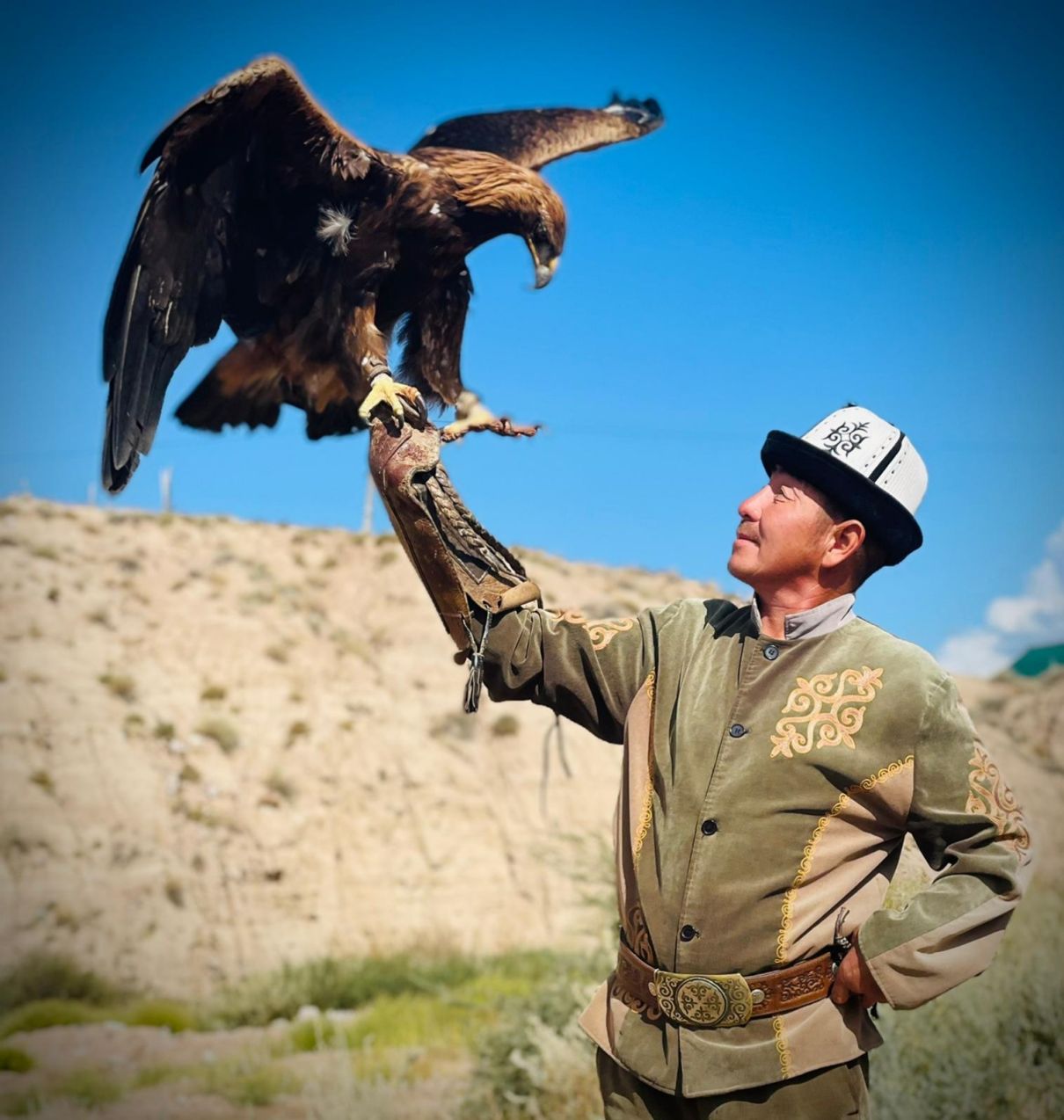
An unforgettable journey on foot through Kyrgyzstan, one of Central Asia's most breath-taking countries.
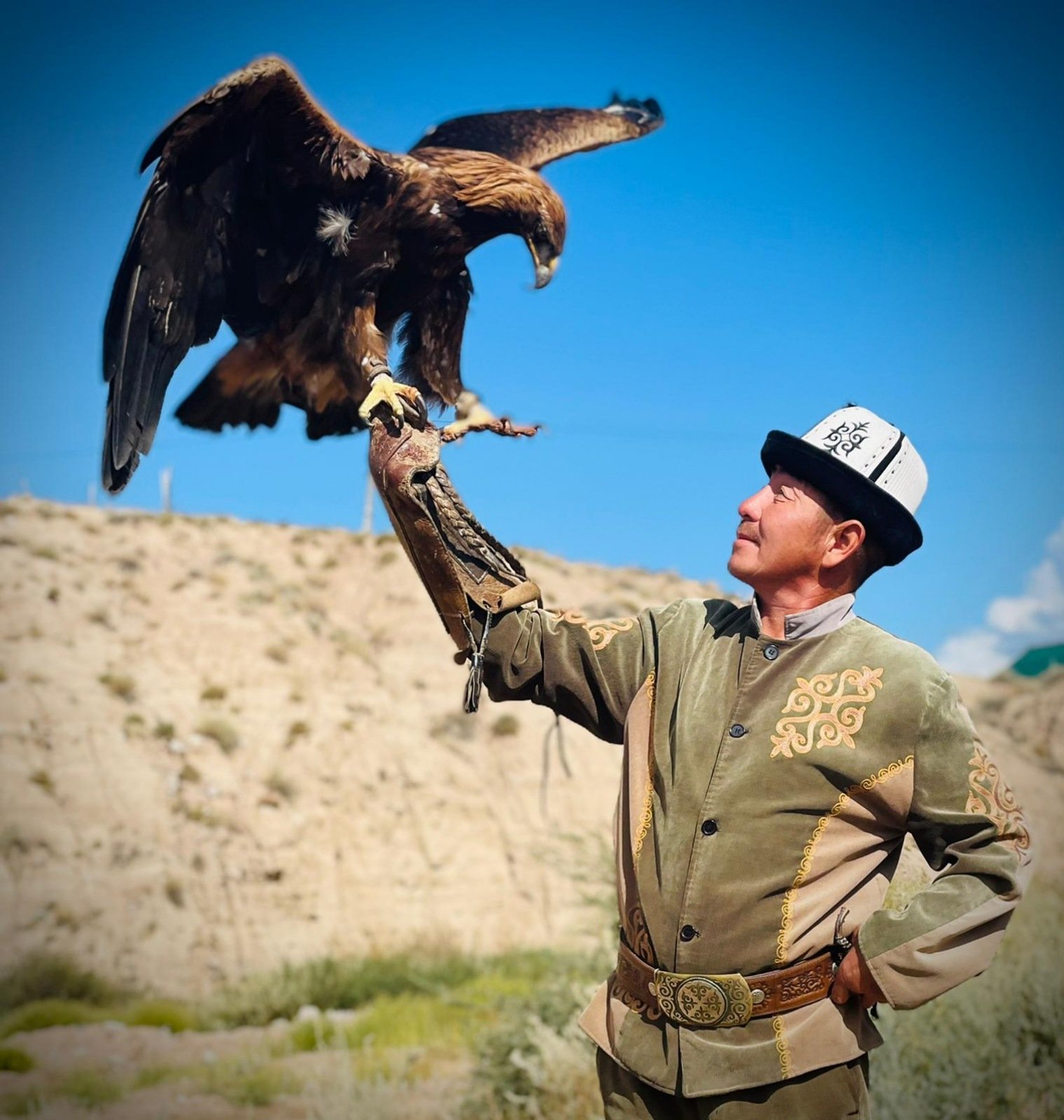
When the eagle hunter arrived, he was dressed in the wardrobe of the country’s nomadic past but drove an old Toyota Sequoia.
His outfit included a khaki-coloured Chapan, a traditional quilted silk coat and breeches with gold-embroidery, knee-high boots; and, for a belt, a heavy leather strap clenched by a steel buckle larger than his smartphone. On his head he wore a Kalpak, a traditional hat made of white felt, which sat high on his brow. After whispering to his seven-kilo eagle, a magnificent creature with lustrous dark brown and golden feathers, he jogged off with the animal on his arm and climbed up to the crest of the closest hill. There he instructed his assistant down below to start running while pulling a rope with a stuffed wolf-skin decoy attached to it, then launched his eagle into the wind.
The animal circled overhead majestically spreading its massive wings, trying to spot its quarry. Then in the blink of an eye, it tilted into a falling gyre and quickened in a descent, swooping down and diving with its massive claws extended to fall onto the bloodless prey. Its reward was a chunk of raw meat, and it ate it violently, before wiping its beak clean. Then, as the hunter came running back down to us, the eagle hopped back onto its master’s gloved hand and nuzzled his face with obvious affection.

Nine days earlier, our Women on a Mission (WOAM) team of 12 had landed in Kyrgyzstan with much excitement and anticipation. It was mid-September 2022, and fall had just begun to set in, but the weather was still mild and the sky a piercing blue.
The trek turned out to be an unforgettable experience to one of Central Asia’s most breath-taking countries, and a deeply moving journey as a team of women pushing limits on high alpine trails, to support women survivors of war in Ukraine, Afghanistan, and Syria.
At the crossroads of several great civilisations and part of the Silk Road, Kyrgyzstan, a landlocked country, is bordered by Uzbekistan, Kazakhstan, Tajikistan, and China. This area of the world was once the very centre of civilisation, with populous, sophisticated cities that used to put to shame the backward, minor western outposts of London and Paris. Today, the country remains relatively untouched by mass tourism, making it the ideal destination for an off the beaten track adventure.
As you arrive in Kyrgyzstan, you are confronted by Soviet-style buildings, sprawling multicoloured markets and richly decorated mosques. Yet, outside the bustling metropolitan city of Bishkek, wonder awaits: A journey deep into the wilder more pristine parts of Kyrgyzstan overwhelms the senses with stunning alpine landscapes, crystal clear lakes, towering snow-capped peaks and rolling pastures brought to life by nomadic, yurt-dwelling shepherds.
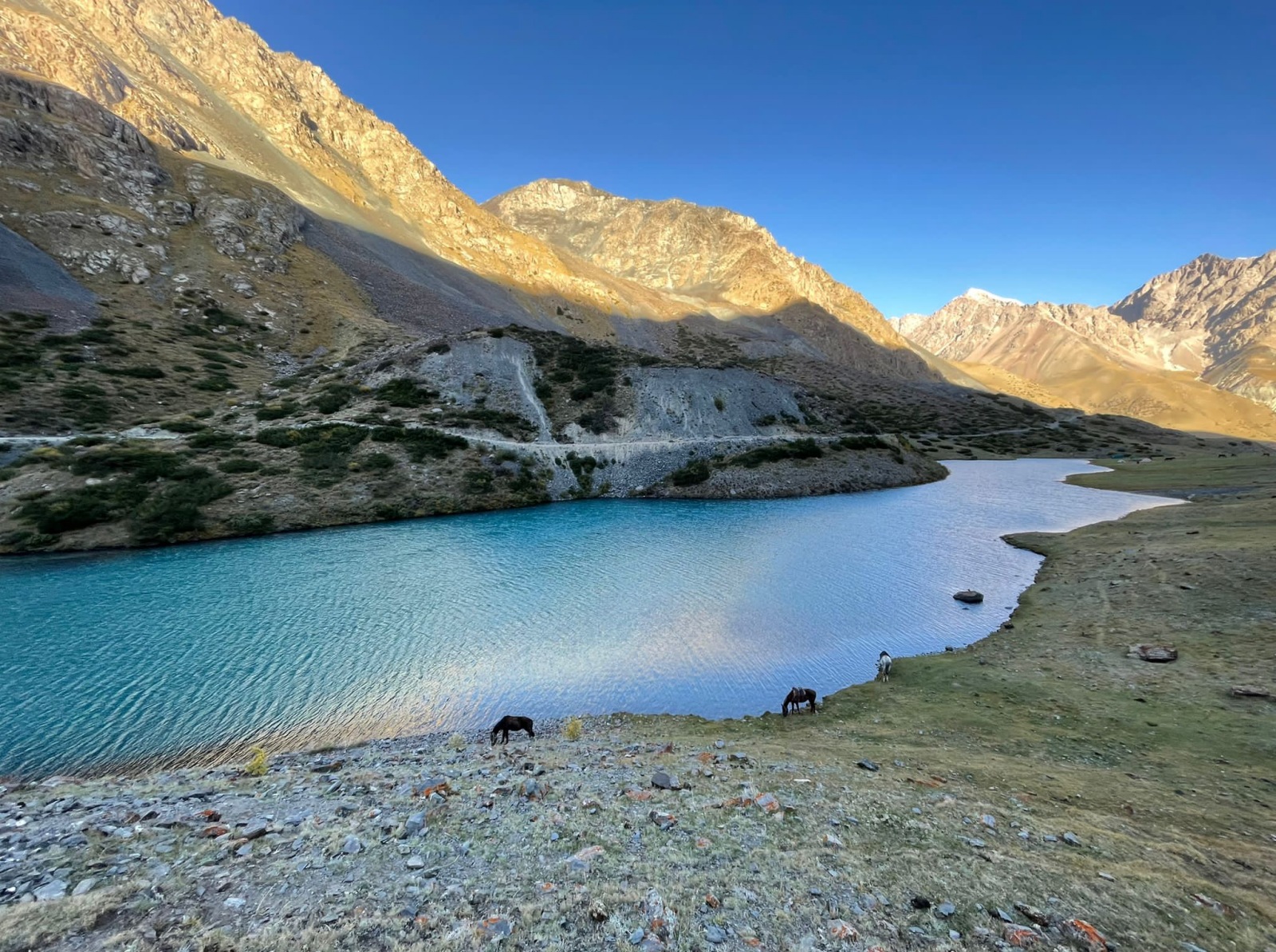
Soon after we landed, our local guide, Zhanara, met us at our hotel lobby and talked a bit about Kyrgyzstan’s rich history and culture. “People first settled in Kyrgyzstan in the sixth century and became part of the Soviet Union until its independence in 1991. Today, our population numbers just 6.5 million people and we have a rich melting pot of ethnic groups,” she shared.
After a traditional local breakfast of cheese, curd, bread, honey, cucumbers, tomatoes, and pickled cabbage, it was time to begin our journey to the stunning Tian Shan Mountain range also called, the “Celestial Mountains,” where our expedition would unfold.
But first stop was the Sezim Crisis Centre, a non-profit organisation that works to promote gender equality, protect women’s rights, and reduce gender-based violence in Kyrgyzstan.
Sezim Crisis Centre
Arriving at the centre, we were met at the entrance hall by a woman dressed in a traditional Kyrgyz tunic and headscarf, Byubyusara Ryskulova, the founder of Sezim Crisis Centre. Byubyusara was a well-known and highly respected women’s rights advocate in Bishkek, who had been relentless in her pursuit of gender equality since setting up the centre in 1998.
In truth, Byubyusara and her team had worked tirelessly to support women these past 24 years, by providing a safe refuge and legal advice to thousands of women affected by gender-based violence and human trafficking in Kyrgyzstan. As we spoke with Byubyusara, she confirmed, that sadly, Kyrgyzstan has one of the highest rates of kidnapping of girls for marriage in the world. We learnt that despite the country’s pledge to take the path of democracy following the collapse of the Soviet Union, domestic violence and trafficking of women, bride kidnapping, child marriages and kelinism or forced subordination of new brides to their mothers-in-law and relatives of their husbands, are still practiced in Kyrgyzstan, although formally criminalized.
After ten hours on the bumpy and dusty road, we arrived at a simple guesthouse in the village of Tamga, located on the southern shore of Issyk-Kul Lake, the seventh-deepest lake in the world, not far from the Tian Shan Mountain range. The next day at dawn, we took our last showers for the week, before making our way to the trailhead to begin our ascent into the magnificent Kyrgyz mountains.
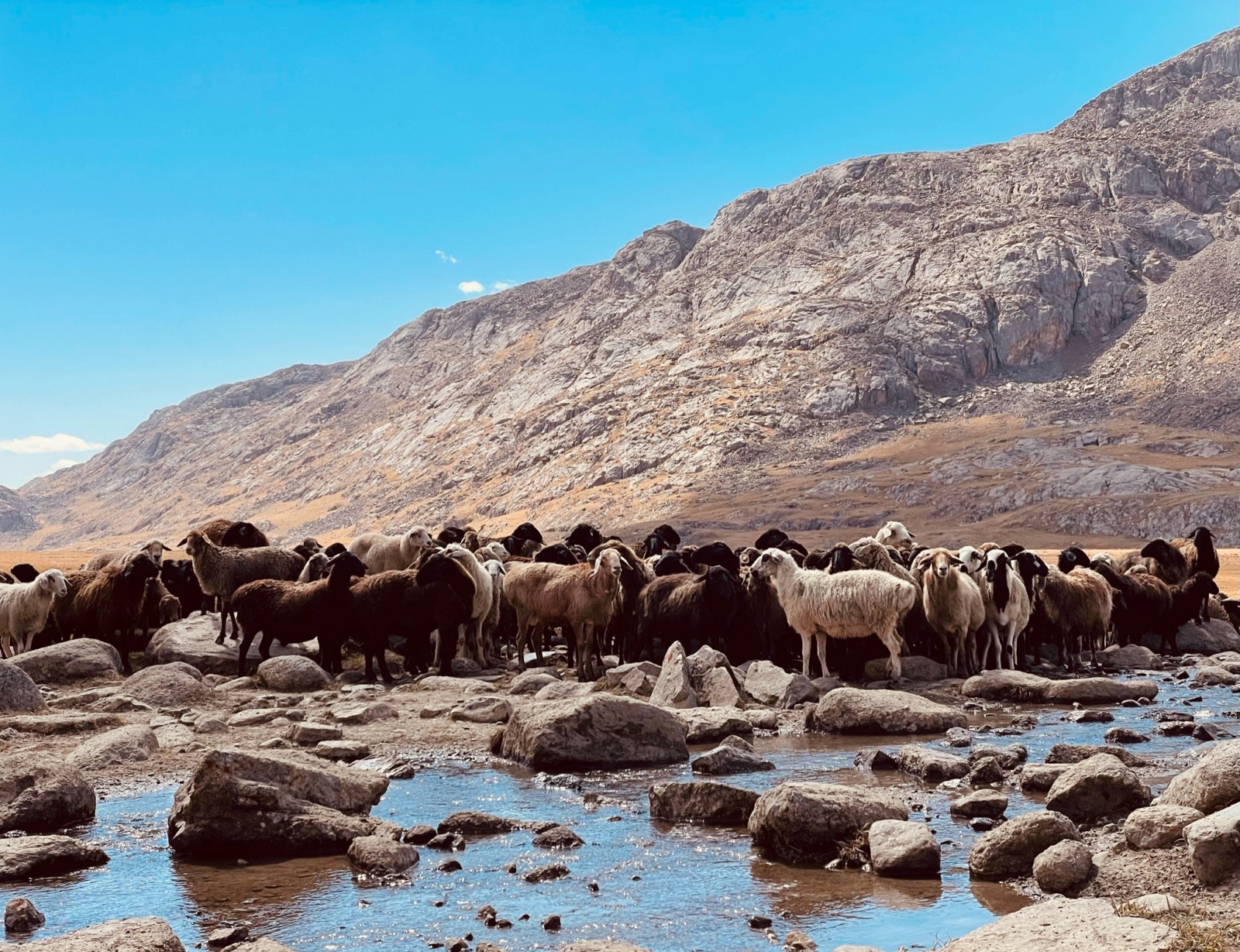
The Climb
We began our trek in the Juuku valley, not far from Lake Issyk Kul at about 1,800 metres. As we climbed higher and higher into the mountains, its wild remoteness closed in around us. Great gorges and rock faces stretched across the horizon, interspersed by streaks of green and yellow plains. After two arduous days of hiking, and despite feeling some of the effects of altitude, we succeeded in reaching the Juuku Pass at 3,800 metres and spent the first few nights on the banks of a spectacular turquoise lake surrounded by jagged peaks.
Accompanying us on our journey were three horsemen and their mounts, our luggage and supplies were loaded on an additional four horses. We also had two cooks with us, on horseback as well, who were in fact a husband-and-wife team, him from Bishkek and her from Uzbekistan. Horses in Kyrgyzstan are deeply connected to the peoples’ nomadic past. It is often said that Kyrgyz people are born on a horse and learn to ride before they even walk. For shepherds, life is hard, simple, beautiful and all about their horses and their herds of livestock.
The Kumtor Gold Mine
The next few days, we continued along the Kumtor Gorge, which is home to the world’s second highest alpine gold mine. The mine is being developed in fragile conditions of permafrost and in the vicinity of glaciers that feed fresh waters into the transboundary Naryn River. It is an area of surreal beauty. Zhanara shared with us that the glaciers, already suffering from the impacts of climate change, are melting much faster and have shrunk tremendously in recent years.
On the third day, we reached the ridgeline of Ak-Shyyrak Range, where we set up camp. This is one of the most compact nodes of the Tian Shan glaciation. The massif consists of three parallel ridges stretching from northwest to southeast. The next couple days we continued to the Ishtik Pass and headed towards the Chinese border, which has awe-inspiring views and is patrolled by Kyrgyz military in certain areas. The goal from that point was to reach the Tez Canyon.
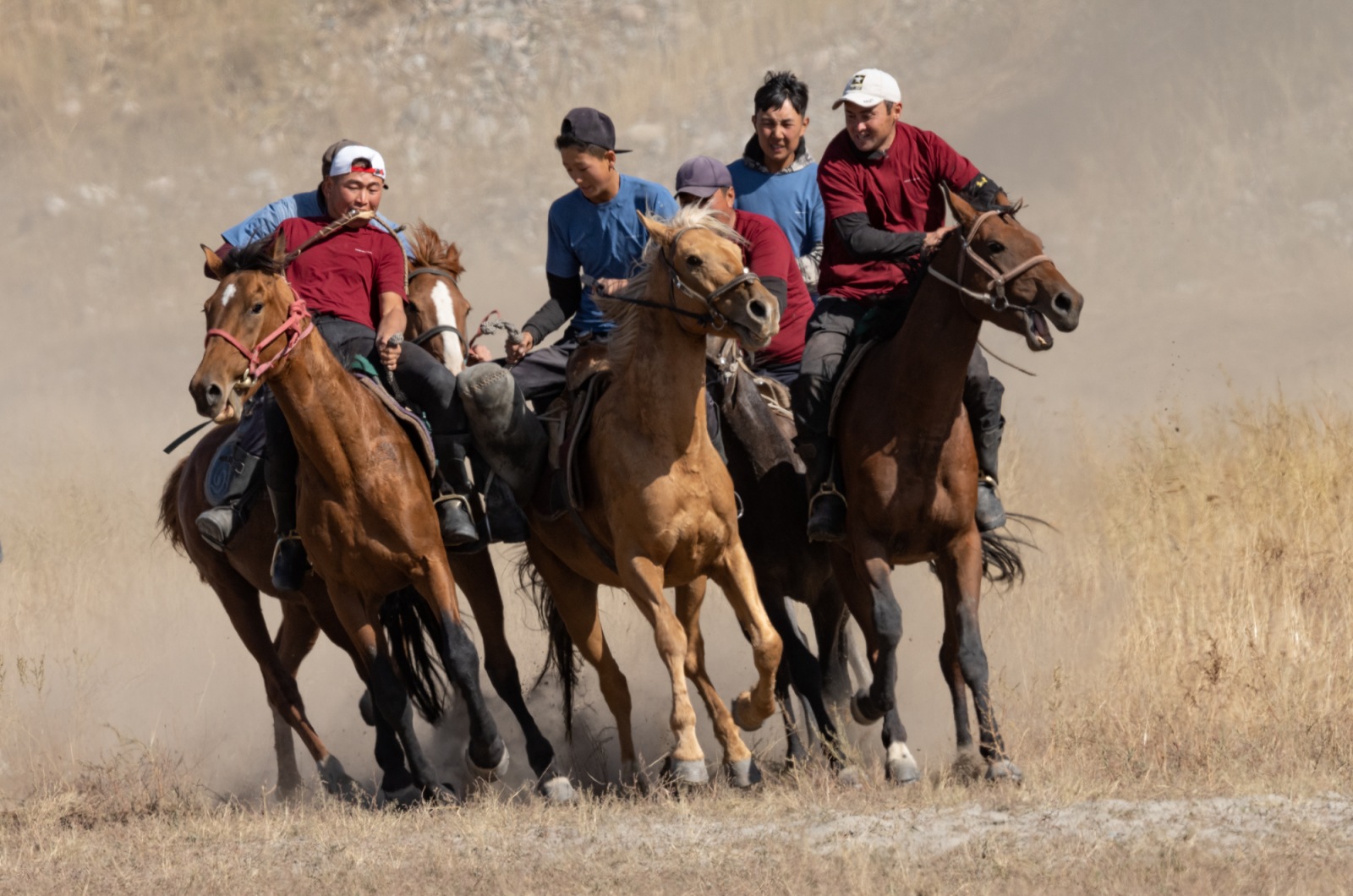
The Storm and the Descent
As we arrived at the canyon on the sixth day, mid-afternoon, I kept thinking: this is what Mars must look like, red, windy and wind stripped. The weather began to deteriorate, and the sun set quickly soon after we arrived. The winds picked up causing temperatures to plumet. That night, we barely slept a wink because the winds howled so loudly and almost flattened our tents.
By morning the snow had arrived and started covering the frigid canyon with a white blanket of powdery frost. We had covered a total 156km in seven days, trekking in and around stunning snow peaked mountains, climbing as high as 4,000 metres and crossing numerous high passes. In the process, our team had succeeded in raising over 60,000 USD for some of the most marginalised women in the world, via one of our charity partners, Women for Women International, an organisation that supports female survivors of war. Despite the fatigue, we felt a deep sense of achievement.
On our way home
Finally back in Bishkek after a celebratory dinner, the team flew home with hearts, minds and senses full of the beauty and colour of Kyrgyzstan, a country with the kind of charm that is rarely found anywhere else in the world. What I remember most though, were the brilliant starry nights and luminescent moon. One evening as I stepped out of my tent, I saw the Milky Way in all its glory spilled across half the sky, it reminded me that living at sea level — even when you head to the beach and strain your eyes — the universe feels far away, but in Kyrgyzstan, the stars feel so close that you could almost touch them, and that made me feel grateful to be alive.
Kyrgyzstan is a country that stetches your imagination with its towering mountains in all directions and men riding by on horseback as fast as they can go. What touched me the most however, was the generosity, warmth and hospitality of the Kyrgyz people. In Kyrgyzstan they have a proverb “a guest is happiness at home,” so all that is best in one’s dwelling is offered and always dedicated to the guest. Even if one does not have that much to offer. There is so much to learn from this.
Christine Amour-Levar is a French-Swiss-Filipina philanthropist, adventurer, human rights and Sustainability advocate. She has built a global career as a marketing and communications expert and social entrepreneur intent on solving some of the world’s most pressing issues. A passionate champion of female empowerment and environmental conservation, Christine co-founded Women on a Mission (WOAM) and founded HER Planet Earth, two award-wining, not-for-profit organizations that take all-female teams on pioneering expeditions as a way to support worthy causes. HER Planet Earth’s primary objective is to raise awareness and funds for underprivileged women affected by climate change, while WOAM aims to empower women who have been subjected to violence and abuse. She is the Author of ‘Wild Wisdom, Life Lessons from Leading Teams to some of the Most Inhospitable Places in the World’ a book published by Penguin Random House in September 2022.
To learn more about WOAM and its fundraising activties, click here.

